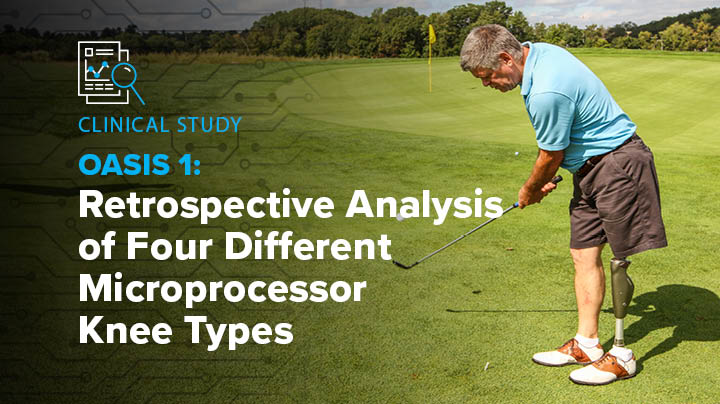
A study conducted by Hanger’s Outcomes, ASsessment and DISsemination (OASIS) series exploring the effectiveness of a variety of orthotic and prosthetic components across different patient groups has been published in the Journal of Rehabilitation and Assistive Technologies Engineering (RATE). The study was conducted by James Campbell, PhD, Phillip Stevens, MEd., and Shane Wurdeman, PhD.
We’re excited to share their findings with the O&P community to assist clinicians in making informed decisions that benefits the limb-loss community.
Watch the recorded webinar to learn more and earn CEUs:
Patient Demographics:
- 68 Rheo users, 178 each/ C-Leg, Orion, and Plié
- Among users of the C-leg, Plié, and Rheo, vascular disease / diabetes was most common amputation etiology specified
- Plié users comprised the highest percentage of females (31.46%)
- Rheo users comprised the highest percentage of employed individuals. (32.35%)
Table 1: Descriptive data for individuals using different microprocessor knees.
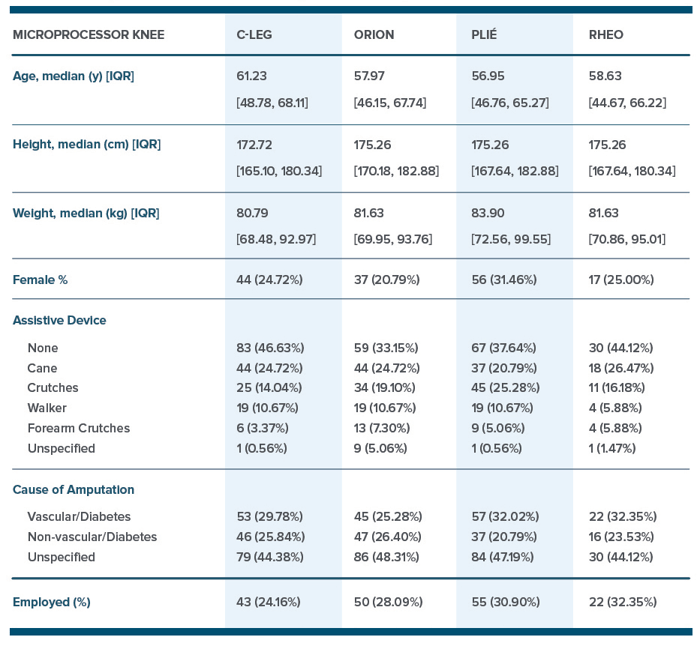
Table courtesy of Hanger Clinic
Results:
Mobility
C-Leg users reported the greatest median mobility, however there were no statistical differences between any of the four user groups (H=2.91, p=0.406).

Figure 1 courtesy of Hanger Clinic
Patient Satisfaction
Satisfaction with amputee status, from PEQ, showed C-Leg and Orion users reported highest median satisfaction. No statistical differences between the four groups (H=4.43, p=0.219).
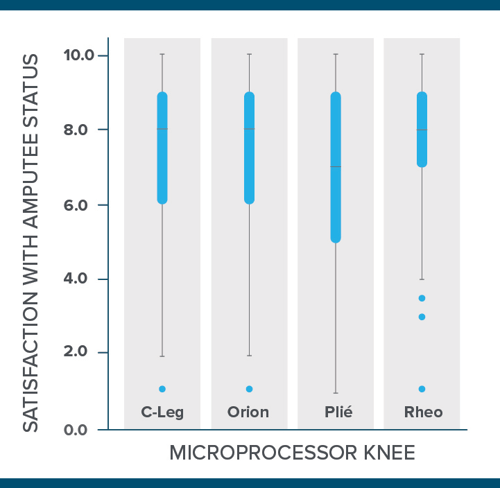
Figure 2 courtesy of Hanger Clinic
Quality of Life
For quality of life, factor level differences were noted between the four knee categories (H=10.15, p=0.0170). Post-hoc analysis revealed significant C-Leg users reported greater quality of life versus Plié (p=0.010).
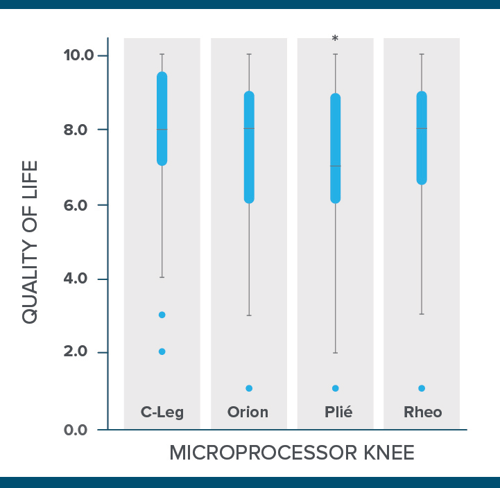
Figure 3 courtesy of Hanger Clinic
Injurious Falls
419 MPK users analyzed – the lowest percentage of individuals to report an injurious fall for which the individual sought medical attention were the C-Leg and Orion users.
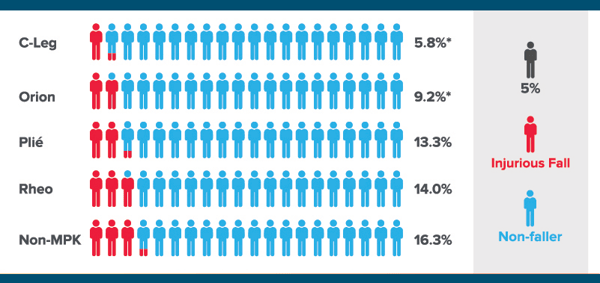
Figure 4 courtesy of Hanger Clinic
Outcomes with Aging
There was a consistent pattern of modest declines in mobility with aging across all MPKs.
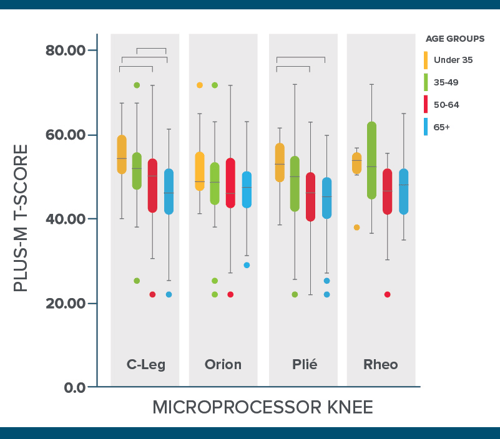
Figure 5 courtesy of Hanger Clinic
Conclusion
- Overall, there was a high degree of parity among the four different microprocessor knees.
- There were no differences in mobility or satisfaction. C-Leg users reported a slightly greater quality of life compared to Plié.
- When examining injurious falls, while there were no statistical differences in injurious fall rates over the prior 6 month period between the 4 MPKs, the difference reached a level of significance for C-Leg and Orion (reduced falls) when compared to injurious fall rates for patients with amputation due to diabetes or vascular disease using non-microprocessor knees.
- The current study carries the advantage of being completed and disseminated absent of potential bias due to manufacturer funding or publication. This allows rehabilitation specialists to care for patients with confidence when selecting various manufacturer components.
Click below to read more.
Interested in reading more studies by Hanger? Click the links below:
IMPACT 2: The Role of Earlier Receipt of a Lower Limb Prosthesis on Emergency Department Utilization



